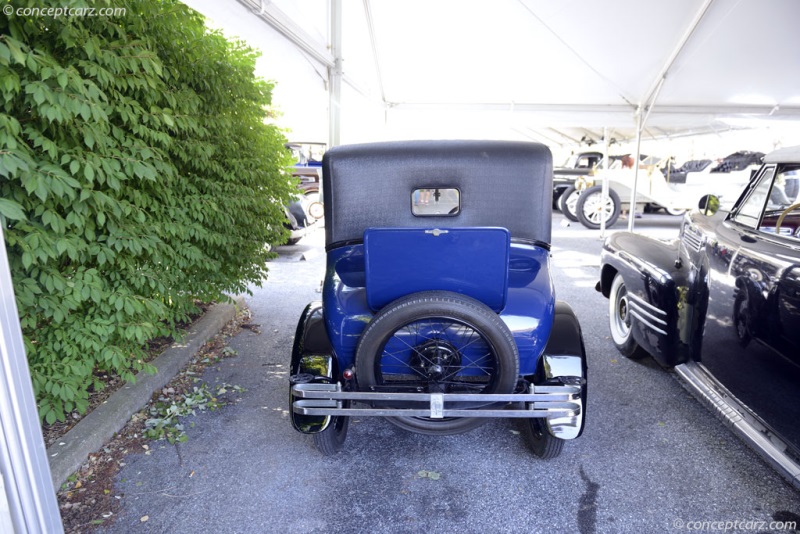History
The Austin Seven was produced from 1923 through 1939 with only minor modifications to the design throughout its production lifespan. It was a simple machine intended to provide the home mechanic the opportunity to race competitively. During the 1920s, the Austin Seven was a popular favorite in Britain, as its lightweight characteristics made it highly competitive. In 1934, the cars were given a lower chassis which allowed new bodies and styles to be adapted. The tires were reduced from 19-inch to 17-inch, and synchromesh was now available on the top two gears.
Parts for the Austin Seven were abundant and cheap. These formed the basis for numerous 'specials' and factory-prepared machines. In 1924 came the Ulster, which had a Cozette-blown supercharger that gave the little machine a top speed of 75 mph.
The small monoposto racer became so popular, that the 750 Motor Club formed the Formula 750. Many famous drivers, such as Lotus founder Colin Chapman, got their start in Formula 750.
By Daniel Vaughan | Jun 2007
Parts for the Austin Seven were abundant and cheap. These formed the basis for numerous 'specials' and factory-prepared machines. In 1924 came the Ulster, which had a Cozette-blown supercharger that gave the little machine a top speed of 75 mph.
The small monoposto racer became so popular, that the 750 Motor Club formed the Formula 750. Many famous drivers, such as Lotus founder Colin Chapman, got their start in Formula 750.
By Daniel Vaughan | Jun 2007
British-based Austin Motor Company was formed in 1905 by Herbert Austin, later to be known as Sir Herbert, who had been a manager of the Wolseley Tool and Motor Car Company. Their first vehicle was powered by a four-cylinder engine that displaced five liters and was chain driven. Around 200 examples were produced during the five years of production.
Production soon expanded to a wider range of vehicles, including the 15, 18/24, and the 40HP four-cylinder models. A 60HP six-cylinder vehicle was even available.
In 1908, four and six-cylinder models were entered into the French Grand Prix. During practice two crashed, with only one able to participate in the race. It did not do well. Two other Austin's managed to finish in 18th and 19th positions.
Austin introduced a single-cylinder mini car in 1090 which produced around 7 horsepower.
During World War I a factory was created which would be used for automobile production when the war concluded. It was a large factory and was never completely utilized by the Austin Motor Car Company. Beginning in 1919, the company chose to produce one model and power it with a 3.6-liter engine that produced 20 horsepower; it was named the Austin 20. The company created a variety of body styles and even tractors but never reached a high volume capacity. In the early 1920s, they entered into receivership but were rescued only a short time later. The company diversified by offering a wider range of vehicles, including the 1661cc Twelve and the Austin 7. The Austin 7 drew its inspiration from the earlier single-cylinder car that Austin had created prior to the war. Both new models were small and inexpensive which appealed to a wider group of buyers.
The Austin Twelve was very similar to the Austin 20, but scaled down to reduce the cost. Production would continue until 1936. The Austin Seven was the car that helped rescue the company from the brink of receivership. It had a 696cc engine which would later expand to 747cc. Over 290,000 examples would be produced during its production run, lasting until 1939.
By Daniel Vaughan | Sep 2007
Production soon expanded to a wider range of vehicles, including the 15, 18/24, and the 40HP four-cylinder models. A 60HP six-cylinder vehicle was even available.
In 1908, four and six-cylinder models were entered into the French Grand Prix. During practice two crashed, with only one able to participate in the race. It did not do well. Two other Austin's managed to finish in 18th and 19th positions.
Austin introduced a single-cylinder mini car in 1090 which produced around 7 horsepower.
During World War I a factory was created which would be used for automobile production when the war concluded. It was a large factory and was never completely utilized by the Austin Motor Car Company. Beginning in 1919, the company chose to produce one model and power it with a 3.6-liter engine that produced 20 horsepower; it was named the Austin 20. The company created a variety of body styles and even tractors but never reached a high volume capacity. In the early 1920s, they entered into receivership but were rescued only a short time later. The company diversified by offering a wider range of vehicles, including the 1661cc Twelve and the Austin 7. The Austin 7 drew its inspiration from the earlier single-cylinder car that Austin had created prior to the war. Both new models were small and inexpensive which appealed to a wider group of buyers.
The Austin Twelve was very similar to the Austin 20, but scaled down to reduce the cost. Production would continue until 1936. The Austin Seven was the car that helped rescue the company from the brink of receivership. It had a 696cc engine which would later expand to 747cc. Over 290,000 examples would be produced during its production run, lasting until 1939.
By Daniel Vaughan | Sep 2007
1927 Austin Model 7 Vehicle Profiles
Recent Vehicle Additions
Performance and Specification Comparison
Seven Specification Comparison by Year
Year
Production
Wheelbase
Engine
Prices













